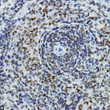| Function | Involved in DNA damage response and in transcriptional regulation through histone methyltransferase (HMT) complexes. Plays a role in early development. In DNA damage response is required for cell survival after ionizing radiation. In vitro shown to be involved in the homologous recombination mechanism for the repair of double-strand breaks (DSBs). Its localization to DNA damage foci requires RNF8 and UBE2N. Recruits TP53BP1 to DNA damage foci and, at least in particular repair processes, effective DNA damage response appears to require the association with TP53BP1 phosphorylated by ATM at 'Ser-25'. Together with TP53BP1 regulates ATM association. Proposed to recruit PAGR1 to sites of DNA damage and the PAGR1:PAXIP1 complex is required for cell survival in response to DNA damage.the function is probably independent of MLL-containing histone methyltransferase (HMT) complexes. However, this function has been questioned. Promotes ubiquitination of PCNA following UV irradiation and may regulate recruitment of polymerase eta and RAD51 to chromatin after DNA damage. Proposed to be involved in transcriptional regulation by linking MLL-containing histone methyltransferase (HMT) complexes to gene promoters by interacting with promoter-bound transcription factors such as PAX2. Associates with gene promoters that are known to be regulated by KMT2D/MLL2. During immunoglobulin class switching in activated B-cells is involved in trimethylation of histone H3 at 'Lys-4' and in transcription initiation of downstream switch regions at the immunoglobulin heavy-chain (Igh) locus.this function appears to involve the recruitment of MLL-containing HMT complexes. Conflictingly, its function in transcriptional regulation during immunoglobulin class switching is reported to be independent of the MLL2/MLL3 complex. |
| Protein Name | Pax-Interacting Protein 1Pax Transactivation Activation Domain-Interacting Protein |
| Database Links | Reactome: R-HSA-5617472Reactome: R-HSA-5693571Reactome: R-HSA-9772755 |
| Cellular Localisation | Nucleus MatrixChromosomeLocalizes To Dna Damage Foci Upon Ionizing Radiation |
| Alternative Antibody Names | Anti-Pax-Interacting Protein 1 antibodyAnti-Pax Transactivation Activation Domain-Interacting Protein antibodyAnti-PAXIP1 antibodyAnti-PAXIP1L antibodyAnti-PTIP antibodyAnti-CAGF28 antibody |
Information sourced from Uniprot.org













